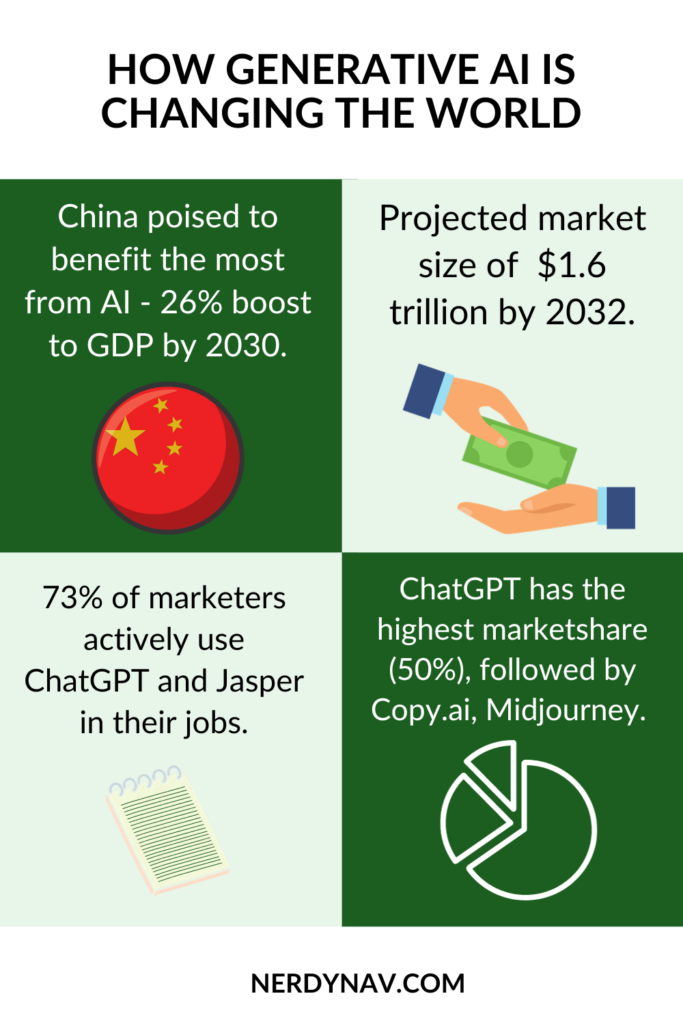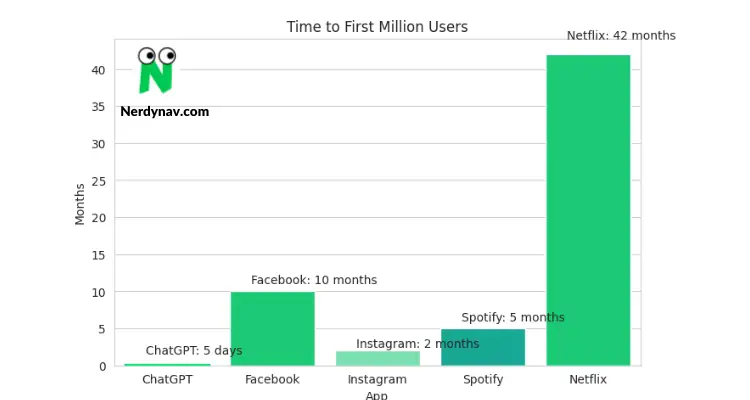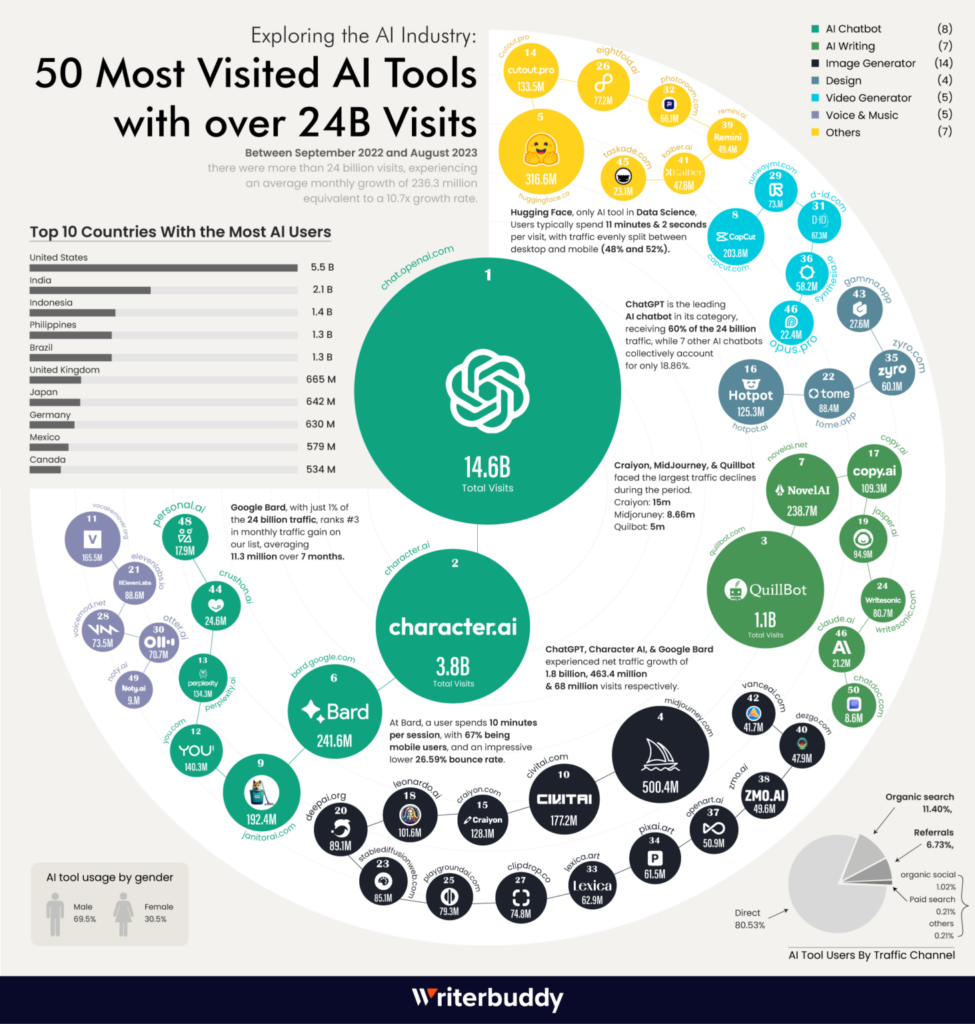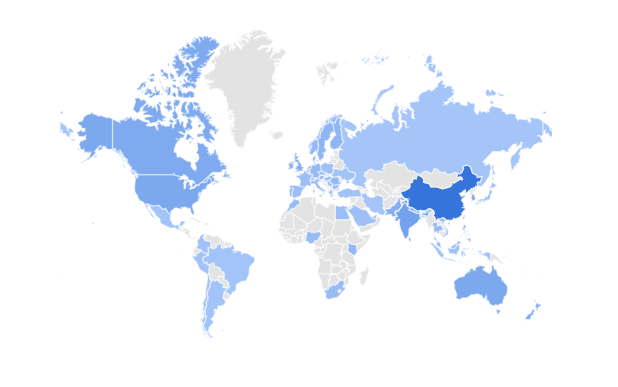In this article, you will find most up-to-date generative AI statistics like market size, trends and funding – with sources. Billions in investments are pouring in, economies are forecast to boom, and industries from banking to healthcare stand poised for disruption.

Generative AI Usage Statistics
ChatGPT, DALL-E, and other generative AI tools have exploded in popularity recently. But beyond the hype, what do the numbers reveal about how these technologies are actually being used?
How fast are users adopting AI tools?

- ChatGPT hit 1 million users in just 5 days after launch (OpenAI)
- DALL-E 2 reached 1 million users in 2.5 months after launch (OpenAI)
- GitHub Copilot gained over 400,000 subscribers in 1 month (Microsoft)
- 65% of generative AI users are Millennials or Gen Z. (Salesforce)
- Over 60% of companies already use generative AI, with marketing leading adoption (over 50% use for content creation).
- 12% of US adults have used ChatGPT for content creation. In the UK, 26% of adults have used some form of generative AI.
- 1 in 3 college students use ChatGPT for homework help. Over half of students in the UK have used AI for education/academic purposes.

How are people using AI?
- 75% looking to automate tasks at work and use for work communications
- 38% use for fun/messing around, 34% for learning about topics of interest.
- As per a survey by Botco:
- The most common AI application is around writing. 58% of respondents report using AI tools like ChatGPT to generate text content.
- About half (50%) are exploring AI’s vocal capabilities for podcasts, voiceovers, and other audio content through AI voice generator tools like LOVO.
- 37% of people are leveraging AI chatbots to automate conversations, especially in customer service.
- Over one-third (36%) are tapping into AI code generation platforms like GitHub Copilot to easily build websites, apps, and other software.
Which Generative AI tools are the most popular?
- When it comes to generative AI, ChatGPT is king.
- Botco’s survey of 1,000 marketers found 73% use AI to create content, and of those, over 50% turn to ChatGPT.
- However, its rivals still claim significant market share – Copy.ai (42%), Jasper.ai (34%), Peppertype.ai (31%), Lensa (28%), DALL-E (27%), and MidJourney (24%)
As per a study by Writerbuddy on 50 most popular AI tools of last year:

- Only 50 AI tools got over 24 billion visits in a year.
- ChatGPT had 14 billion visits, which is 60% of the total.
- AI traffic grew 10.7x, adding 236.3 million visits monthly.
- The US contributed 5.5 billion visits and Europe added 3.9 billion.
- More AI users are male (69.5%) than female (30.5%).
- 63% used AI tools on mobiles.
Read our in-depth jasper.ai statistics report with market share and revenue trends.
Who is not onboard yet?
- 68% of non-users are Gen X or Baby Boomers.
- 40% say they aren’t familiar enough with the technology, 32% say it’s not useful for them.
- 70% would use more if they knew more about it, 64% if it was more secure.
How much content is AI?
- Technology sector leads in use of OpenAI, education sector next. (Enterprise Apps Today)
- 30% of outbound corporate messages will be AI-generated by 2025. (Gartner)
- Over 30% of new drug launches could be AI-discovered by 2025. (Gartner)
Generative AI Impact on Business
Businesses today face relentless pressure to deliver more content, insights, and innovations at warp speed. Now, generative AI offers a shortcut, promising to help companies supercharge productivity and creativity on demand.
The numbers reveal companies racing to tap these AI tools’ commercial potential across departments from marketing to R&D.
What’s the upside for business?
- 79% of leaders report cost decreases from AI adoption (McKinsey)
- 20% coding speed boost with AI code generation (Deloitte)
Expected market size
- Generative AI market projected at $110.8 billion by 2030 (Acumen Research)
- AI market as a whole projected at $422 billion by 2028, $1.6 trillion by 2032 (Zion, Grand View Research, Bloomberg)
- Drug discovery and coding top areas for AI startup funding. (Gartner)
- Google’s recent survey of 50 leaders reveals a troubling gap between AI aspirations and reality. 64% tech leaders reported feeling a sense of urgency to adopt generative AI. However, only 4% said their organizations have the skills to execute an AI strategy.
- In fact, over 3 in 5 leaders (62%) admitted their organizations lack the most critical abilities to effectively utilize AI.
Funding and investments in Generative AI
| Company | Funding |
|---|---|
| OpenAI | $10 billion (Series C) |
| Inflection | $1.3 billion (Series B) |
| Anthropic | $850 million (across a Series C and corporate minority round) |
| Adept | $350 million |
| Cohere | $270 million |
- In just the first half of 2023, over $14 billion was invested across 86 deals in generative AI startups. This marks a record funding year already.
- OpenAI got the largest funding of $10 billion by Microsoft.
- More importantly, 78% of startups are still early stage and haven’t raised any equity funding (CBInsights). This means the industry still has a lot of room to grow.
Who is poised to benefit the most from Generative AI?
- Banking, Software, and Health sectors will benefit the most from automation and augmentation provided by generative AI (Statista).
- When it comes to investment, the United States and China are currently leading global AI funding. However, smaller countries like Israel and Singapore are making an outsized impact relative to their size.
- The greatest economic gains from AI will be in China (26% boost to GDP in 2030) and North America (14.5% boost) as per a PWC study.

Should we be worried?
- 48% end users believe AI shouldn’t be used for marketing ads (Statista)
- OpenAI’s classifier can detect 26% of AI text, 9% false positive rate (OpenAI)
- ChatGPT detector tools are resulting in many false positives, especially when it comes to catching ChatGPT plagiarism in academia.
- This is causing a lot of agony to students with their entire degree at stake.
- NewsGuard detected 49 AI-generated news websites in April 2023 leading to concerns of mass misinformation campaigns.
- McAfee’s survey found that atleast 1/4th of the 7054 people surveyed had experienced AI voice scams. Most of these scams occur via phone calls.
Final Thoughts
Generative AI has sparked intense debate, but the statistics leave little doubt – this technology is here to stay and will only grow. Companies and consumers alike will continue adapting as generative AI’s capabilities advance.
If you liked this post about generative AI statistics, check out our post on ChatGPT statistics and its impact on education.
Sources: Salesforce, Botco, CBinsights, Statista, Dialpad, Mckinsey
What is Generative AI?
Generative AI refers to a class of artificial intelligence systems that are capable of generating new content (text, images, videos, audio) rather than just analyzing data. The most well-known examples today are large language models like GPT-3, DALL-E 2, and Stable Diffusion.
The key to their capabilities lies in a technique called deep learning. These AI models are trained on massive datasets – everything from digitized books and web pages to millions of images and videos. By analyzing these huge troves of data, the AIs learn to recognize patterns and relationships between words, concepts, and visual elements. This allows them to make highly educated guesses about how to fill in the blanks when creating new content.
- 5 Best No-Code App Builders 2024 (used by actual startups) - June 15, 2024
- 5 Successful No Code Startups and Companies 2024 (with Tech Stack) - January 26, 2024
- AI Sleeper Agents: Latest Danger to AI Safety (Anthropic Research) - January 20, 2024
